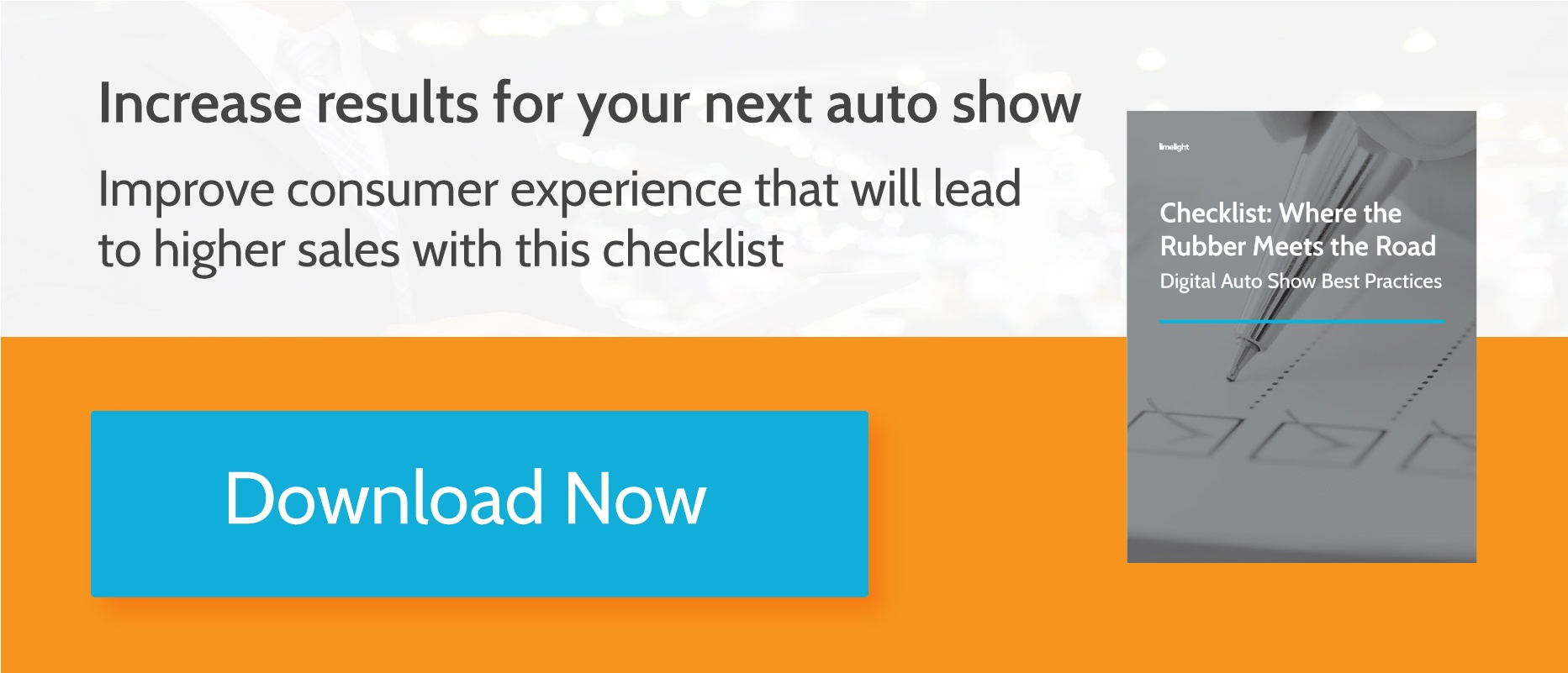The Road to Purchase: How OEMs and Dealer Groups Can Personalize Consumer Experiences at Scale
.png?width=50&name=download%20(1).png) By
Julia Manoukian
·
3 minute read
By
Julia Manoukian
·
3 minute read
Automotive marketers use online metrics to assess the impact of digital advertising, but much of the buyer's journey takes place in a live marketing environment. They face challenges understanding the customers who visit dealerships and ultimately purchase a vehicle. By following the best practices for creating, measuring and improving data-driven marketing programs, you can optimize your strategy and drive higher revenue and improved customer loyalty.
Understanding the Car Buyer's Journey
An emphasis on measuring digital metrics makes sense on the surface. A majority of used and new car buyers start the process with online resources. They research car categories, read reviews on particular models, learn about new features and discover dealership websites.
However, when it comes time to actually make the purchase, the live experience has the most significant influence on the customer. They can only get so much information from a website, whether it's your dealership's or a third-party resource, but it can't compare to actually test driving the vehicle or talking one-on-one with an expert.
Putting together the big picture of the car buyer's journey is a complex process. Customers jump between channels frequently, may return to earlier points in the journey due to life events, use multiple devices for consuming digital content and choose the original model of car they were thinking about in 75 percent of purchases.
Measuring the Impact of Each Touchpoint
Determining the appropriate attribution for each touchpoint is the next step in your data-driven auto marketing strategy. You already have data collection and analytics built-in to many digital marketing platforms, but now it's time to include the live experience for an omnichannel approach.
One way to measure the impact of each touchpoint on the car buyer's journey is to look for innovative ways to track their behavior and associate it with particular stages. Dealerships have several ways to accomplish this goal. You can manually track the information if necessary, but this requires a lot of redundant and repetitive work throughout the process.
Integration with other systems, such as your customer relationship management platform, can pull the necessary live marketing data and combine it with your digital metrics. Beacon technology, which is commonly used in retail environments, can interact with buyer mobile devices through an app or similar functionality, providing you with additional data. Custom apps are another way to gain insights on your potential buyers when they visit the dealership.
Gap Analysis for Your Marketing Strategy
Collecting the data reveals weaknesses in your live marketing strategy. When you front-load your attention on the discovery portion of the buyer's journey, you don't have the resources in place to maximize your opportunities once someone steps on your lot.
The customer experience is particularly important if you want to get the attention of the millennials and other young generations. They want a quality live experience when they make car purchases, as well as one that seamlessly integrates technology.
Some dealerships leverage tablets to cover both bases. This tech-forward approach allows the salesperson to quickly pull up any additional information the buyer might want, including financing information. They provide undivided attention to the potential customer since they don't need to go back to their office for paperwork or consult with another staff member on car details.
By pulling together online and live data, you can determine where your weak points are on the buyer's journey. You can focus your attention on these stages and the associated activities to provide a consistent end-to-end experience.
Optimizing Your Strategy
An effective data-driven auto marketing strategy isn't a set-it-and-forget-it process. You need to frequently revisit what you're doing, the metrics that you're tracking, the technology you use and the buyer's expectations to see areas that you can improve.
This iterative process is more resource-intensive than setting up a search engine marketing campaign and ensuring that it has an appropriate budget, but you'll see the results in your dealership's bottom line. Companies that significantly invest in their data-driven marketing efforts can increase their profitability up to 45 percent, compared to the seven percent of businesses that are not leaders in this area.
Another way to optimize your strategy is to implement live marketing automation. You can improve your lead nurturing, stay on top of buyer follow-ups, track results in real-time, offer locally targeted mobile promotions and influence buyers through custom applications.
A comprehensive live marketing solution is an important tool to support your data-driven automotive marketing strategy. When you use event technology, you can boost your event attendance by 20 percent. Your productivity could also see a gain of 27 percent, with a drop in your costs of up to 30 percent, according to Enterprise Event Marketing.
Make sure that you're tracking all of your activities during the optimization process. When you can see the results of your efforts in real-time, you can quickly make changes to personalize the experience for your current buyer pool. Adapting to changing customer expectations and any disruptive elements in your market, such as a competitor releasing an enticing promotion that day, can mean the difference between meeting your sales goals and falling behind that month.
Data-driven marketing connects the automotive path-to-purchase in a way that you can qualitatively track. You need to start with a strong foundation that accounts for digital and live marketing efforts to discover what's actually going on during the car buyer's journey, and the right metrics to look at for each stage.

